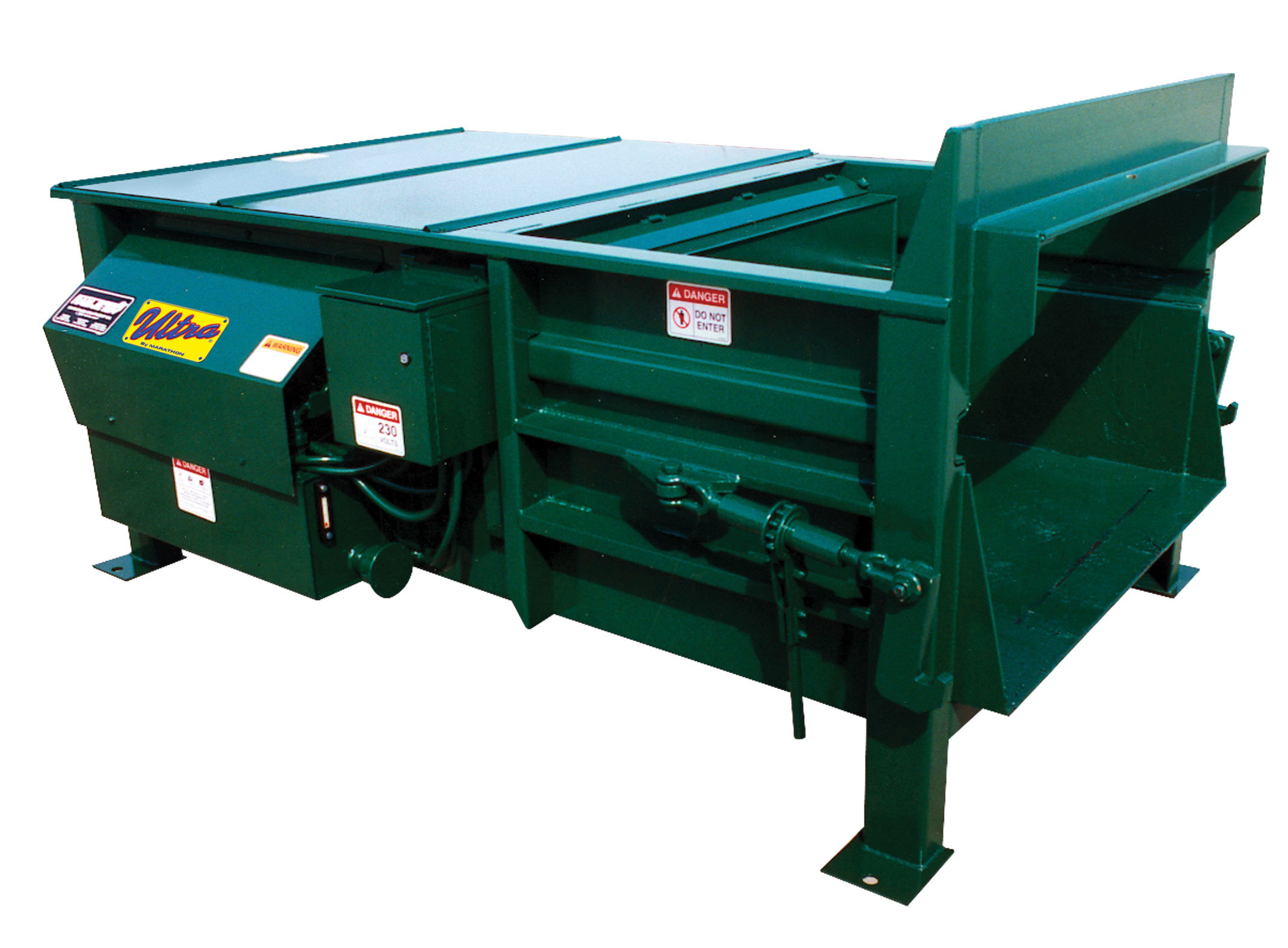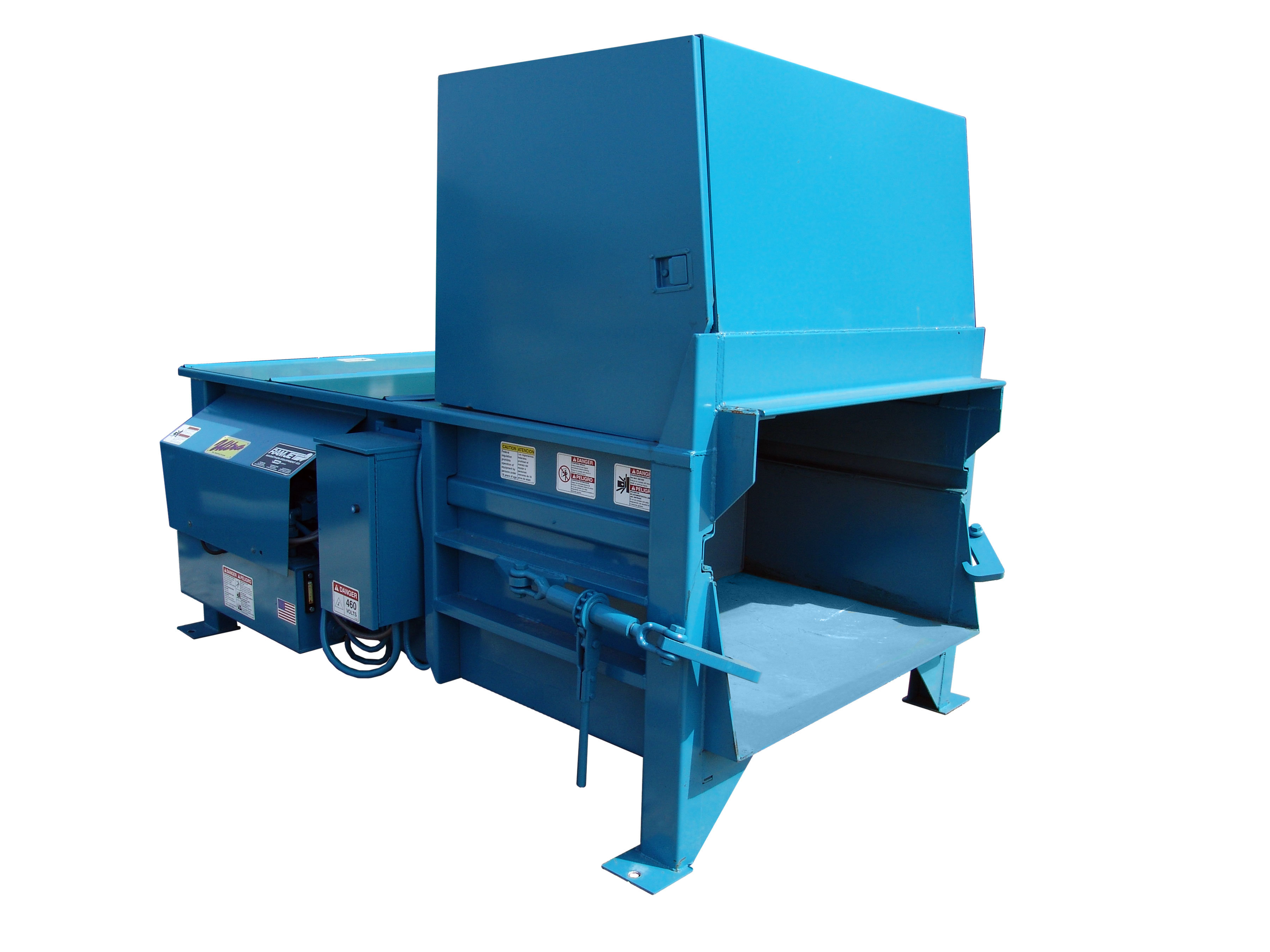How Commercial waste compactor equipment upgrades safety and cleanliness
Comprehending the Different Usages of Waste Equipment in the Recycling Market
The reusing industry counts greatly on specialized waste tools to optimize handling and healing. Each device, from shredders to balers, offers a distinct purpose that enhances general performance. Comprehending these roles is vital for improving sustainability initiatives. Commercial garbage compaction equipment. As technology developments, new developments emerge, promising to change conventional methods. This development elevates important concerns concerning the future of waste monitoring and its effect on ecological conservation. What modifications exist ahead for this critical industry?
The Role of Shredders in Material Handling
Shredders play an essential duty in the reusing sector by effectively processing numerous sorts of waste materials. These machines are made to minimize large things, such as plastics, steels, and organic waste, into smaller, convenient pieces. This dimension reduction is important for subsequent recycling procedures, as it enables for simpler handling and sorting. In addition to promoting recycling, shredders boost safety by lessening the danger of injury related to handling bulky waste items.
Shredders contribute to ecological sustainability by ensuring that materials are refined in a way that makes best use of source healing. They can take care of a diverse series of materials, making them flexible tools in waste monitoring facilities. The efficient procedure of shredders not just improves the reusing process yet also boosts the total efficiency of waste diversion initiatives, advertising a round economic situation. Their relevance in product processing can not be overstated, as they work as a foundational action in the direction of sustainable waste monitoring techniques.

Exactly How Balers Enhance Efficiency in Waste Administration
Balers significantly improve performance in waste administration by condensing numerous products into bales, which streamlines storage and transportation. By pressing recyclables such as cardboard, plastics, and steels, balers considerably lower the quantity of waste. This compression not only takes full advantage of space in reusing facilities but additionally reduces the variety of journeys required to carry materials, causing reduced gas prices and lowered environmental influence.
Moreover, balers add to boosted security in waste monitoring procedures. Small bundles are simpler to deal with and pile, minimizing the danger of mishaps connected with loose products. The consistent size of bales enables much more efficient filling and unloading procedures, streamlining operations within reusing facilities. Furthermore, balers can improve the total quality of recyclables, as appropriately compressed materials are much less likely to be polluted. Generally, balers play an important function in maximizing waste monitoring methods, promoting sustainability in the reusing market.
Conveyor Solutions: Streamlining the Recycling Process
Including advanced machinery like balers considerably improves waste management procedures, yet the effectiveness of the recycling process is additionally boosted with making use of conveyor systems. These systems play a necessary duty in the seamless transport of materials within reusing centers. By facilitating the activity of various waste kinds, conveyor systems decrease hand-operated handling and lower the threat of contamination throughout the reusing procedure.
Conveyor systems can be tailored to fit the unique formats and operational requirements of reusing facilities. Their capability to operate continuously enables a steady circulation of materials, improving performance and making certain that sorting and refining equipment obtains a consistent supply.
Equipped with functions like flexible rates and automated controls, conveyor systems can optimize the flow of materials, considerably improving total performance (Commercial garbage compaction equipment). Subsequently, these systems are vital in contemporary recycling operations, streamlining procedures and contributing to reliable waste administration
Arranging Devices: The Secret to Material Healing
Sorting equipments are vital his comment is here components in the recycling industry, substantially boosting the performance of product healing. These makers play a pivotal function in the separation of various recyclable products, enabling a structured process that maximizes source extraction. By using advanced technologies, such as optical sensing units and air classifiers, arranging devices can identify and categorize materials based upon their composition, size, and weight. This capability guarantees that metals, plastics, and paper products are effectively isolated, decreasing contamination and boosting the quality of recycled result.
The operation of sorting makers significantly lowers the dependence on manual work, which can be both prone and time-consuming to mistakes - Commercial garbage compaction equipment. Additionally, the automation offered by these equipments increases the overall recycling process, leading to greater throughput and enhanced operational efficiency. Sorting machines are indispensable in achieving lasting waste management goals, allowing the reusing industry to properly recover useful materials while reducing landfill reliance.
Advancements in Waste Tools for a Sustainable Future
Recent improvements in waste tools are driving the recycling industry toward a much more sustainable future. Advancements such as automated arranging systems, which make use of artificial intelligence and maker discovering, enhance performance by accurately determining and separating recyclables. This causes higher recuperation rates and lowered contamination. Furthermore, advancements in condensing technology enable a lot more efficient transportation of materials, minimizing carbon footprints throughout transit.
In addition, innovations in shredding equipment enhance the processing of intricate materials, enabling the recycling of products that were as soon as regarded non-recyclable. The integration of renewable resource resources, like solar power, in waste handling centers even more adds to sustainability objectives. In view addition, innovations in naturally degradable materials and waste-to-energy technologies are improving the landscape of waste administration. Jointly, these innovations symbolize a transformative shift within the reusing sector, advertising not just environmental management but also economic practicality for future generations.
Frequently Asked Questions
What Kinds Of Products Can Waste Devices Take Care Of?
The kinds of products waste tools can deal with consist of plastics, metals, paper, glass, and organic waste. Each equipment kind is developed for specific materials, optimizing performance and efficiency in arranging and processing numerous waste streams.
How Often Should Waste Tools Be Maintained?

Are There Security Problems With Utilizing Waste Devices?
Security interest in using waste equipment consist of potential injuries from mechanical malfunctions, exposure to unsafe products, and insufficient training. Proper upkeep, routine inspections, and employee education and learning are important to minimize these threats successfully in any setting.
What Is the Ordinary Life Expectancy of Recycling Devices?
The average life-span of recycling tools generally varies from 10 to two decades, depending upon aspects such as use intensity, maintenance methods, and technical innovations, which can substantially affect toughness and Continue effectiveness in time.
How Is Waste Devices Powered in Recycling Facilities?
Waste devices in recycling facilities is typically powered by electrical power, though some makers may make use of alternative power sources like all-natural gas or diesel. This power enables efficient handling and change of products for recycling functions.
Shredders play a crucial function in the recycling market by effectively processing different types of waste materials. They can deal with a varied array of products, making them versatile devices in waste management facilities. Balers significantly boost effectiveness in waste management by condensing various products into bundles, which simplifies storage and transport. The kinds of materials waste devices can manage include plastics, steels, paper, glass, and organic waste. Safety and security worries with making use of waste tools consist of potential injuries from mechanical malfunctions, exposure to dangerous products, and insufficient training.